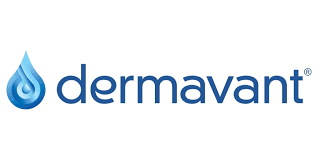Secondary Efficacy and Patient-Reported Outcomes in Phase 2b Clinical Trial of Tapinarof Cream for Atopic Dermatitis

Secondary efficacy and patient-reported outcomes from Dermavant's Phase 2b randomized clinical trial of tapinarof cream for the treatment of atopic dermatitis were recently reported in The Journal of the American Academy of Dermatology (JAAD). Tapinarof cream is a potential first-in-class, once-daily topical therapeutic aryl hydrocarbon receptor modulating agent (TAMA) for the treatment of plaque psoriasis and atopic dermatitis.
The latest analyses of the Phase 2b study include ≥75%, and ≥90% improvement in the Eczema Area and Severity Index from baseline (EASI75, EASI90), in addition to mean percentage change in EASI scores, the mean change in percentage of body surface area (BSA) affected, and mean change in total severity score.
Patient-reported outcomes include the proportion of patients who achieved ≥3-point improvement in pruritus numeric rating scale (NRS) score from baseline, subject impression of severity of atopic dermatitis symptoms, and subject impression of overall change in severity of itch symptoms from baseline to Week 12. The expanded Patient-Oriented Eczema Measure (POEM) was used to assess itch, sleep disturbance, and skin signs and symptoms, and the Daily Signs and Symptoms Severity Diary to score 11 disease-related symptoms.
Highlights from the Secondary Efficacy and Patient-Reported Outcomes
Secondary Efficacy Outcomes:
- Tapinarof 1% QD (51%; n=41) demonstrated statistically significant improvement in EASI75 compared to vehicle QD (25%; n=40) at Week 12 (p=0.016).
- Tapinarof 1% QD (-48%; n=41) demonstrated statistically significant greater reductions from baseline in mean percentage change in BSA compared to vehicle QD (-5%; N=40) at Week 12 (p=0.006), which was maintained for four weeks after treatment discontinuation (through Week 16) (p=0.038).
- More patients achieved ≥3-point improvement in pruritus NRS in the tapinarof groups (n=165) than the vehicle groups (n=82) from Week 2 onward.
Post-hoc Analysis:
- EASI90 response was statistically significantly higher in patients treated with tapinarof 1% QD (27%; n= 41) compared with vehicle QD (5%; n=40) at Week 12 (p=0.007).
Additional Patient-Reported Outcomes:
- Patients treated with tapinarof 1% QD (80%; n=41) demonstrated statistical significance in the rating of the overall severity of their atopic dermatitis symptoms as very or moderately improved compared with the vehicle QD (43%; n=40) at Week 12 (p<0.001).
- Patients treated with tapinarof 1% QD (78%; n=41) demonstrated statistical significance in the rating of the overall severity of their pruritus symptoms as very or moderately improved compared with the vehicle QD (40%; n=40) at Week 12 (p<0.001).
- As previously reported in JAAD2, most adverse events were mild or moderate. The most commonly reported adverse events were nasopharyngitis, folliculitis, and atopic dermatitis.
“We are excited that JAAD has shared this additional evidence of tapinarof’s clinical response with these secondary efficacy and patient-reported outcomes from the Phase 2b study for atopic dermatitis,” says David Rubenstein, MD, PhD, Chief Scientific Officer of Dermavant. “Because atopic dermatitis can interfere with daily life, these outcomes are especially important to patients, their caregivers, and the physicians who treat them. Dermatologists have shared with us their interest in potential topical treatment options that can address and relieve some of the very problematic symptoms of this debilitating skin disease, and today’s data speaks to the potential of tapinarof to meet this demand, subject to FDA approval.”

Facebook Comments